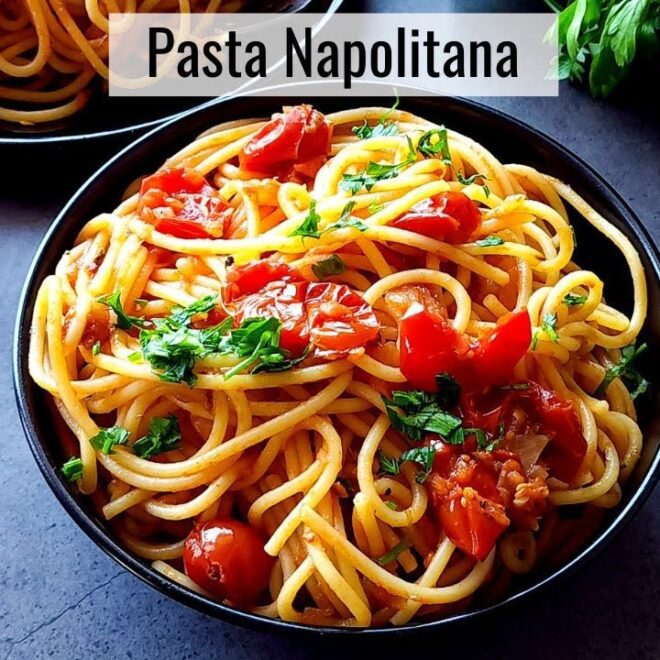Naples, the heart of southern Italy, is renowned for its rich history, vibrant culture, and, most notably, its culinary delights. Among the many gastronomic treasures that this region offers, the term “Napolitana” stands out, evoking images of delicious dishes that have become staples in both Italian cuisine and international dining. Let’s delve into the world of Napolitana, exploring its origins, variations, and significance in the culinary landscape.
The Origins of Napolitana
The word “Napolitana” is derived from “Napoli,” the Italian name for Naples. This coastal city has a long-standing tradition of producing some of Italy’s most beloved foods. The term is often used to describe dishes that are typical of Neapolitan cuisine, reflecting the flavors and ingredients that are characteristic of this region.
One of the most iconic Napolitana dishes is Pizza Napolitana. This classic pizza, recognized by UNESCO as part of the intangible cultural heritage of humanity, is distinguished by its thin, soft crust, fresh tomato sauce, mozzarella cheese, and basil, embodying the colors of the Italian flag. The traditional preparation involves using specific types of flour, San Marzano tomatoes, and fresh mozzarella di bufala, all baked in a wood-fired oven at high temperatures to achieve the perfect balance of crispy and chewy textures.
Beyond Pizza: Other Napolitana Delights
While pizza is perhaps the most famous Napolitana creation, the culinary offerings of Naples extend far beyond this beloved dish. Another staple is Spaghetti alla Puttanesca, a pasta dish that brings together the bold flavors of tomatoes, olives, capers, and anchovies. This robust and savory sauce is a testament to the resourcefulness of Neapolitan cooks, who historically made use of readily available ingredients to create hearty and flavorful meals.

Parmigiana di Melanzane, or eggplant Parmesan, is another classic. This dish layers slices of eggplant with rich tomato sauce, Parmesan cheese, and mozzarella, baked to perfection. Its origins are rooted in the local produce and culinary techniques of Naples, showcasing the region’s knack for transforming simple ingredients into culinary masterpieces.
Sweet Endings: Napolitana Desserts
Neapolitan cuisine also boasts a variety of delectable desserts, each with a unique history and flavor profile. Sfogliatella is a beloved pastry that comes in two main varieties: riccia, with a crisp, layered shell, and frolla, with a smoother, more dough-like exterior. Both are filled with a sweet ricotta mixture, often scented with citrus and vanilla.
Pastiera, a traditional Easter dessert, is a wheat berry and ricotta cheese pie flavored with orange blossom water. Its origins date back to ancient times, and it remains a symbol of Neapolitan culinary heritage, often prepared and shared during festive occasions.
The Cultural Significance of Napolitana Cuisine
Napolitana cuisine is more than just a collection of recipes; it is a reflection of Naples’ history, geography, and cultural exchanges. The city’s position as a significant Mediterranean port has allowed it to absorb and integrate diverse culinary influences over centuries, from Greek and Roman to Spanish and French. This blend of flavors and techniques has given rise to a unique culinary identity that continues to evolve while staying true to its roots.
Moreover, the communal aspect of Neapolitan dining—where meals are often shared among family and friends—emphasizes the importance of food in fostering social bonds and cultural continuity. The traditions of making and enjoying Napolitana dishes are passed down through generations, preserving a sense of identity and heritage.
FAQ about Napolitana Cuisine
Q: What makes Pizza Napolitana different from other types of pizza?
A: Pizza Napolitana is characterized by its thin, soft crust, fresh tomato sauce made from San Marzano tomatoes, mozzarella di bufala, and basil. It is traditionally baked in a wood-fired oven at very high temperatures, which gives it a unique texture and flavor.
Q: Are there vegetarian options in Napolitana cuisine?
A: Yes, many Napolitana dishes are vegetarian-friendly. Examples include Parmigiana di Melanzane (eggplant Parmesan), Spaghetti alla Puttanesca (without anchovies), and various types of pizza and pasta dishes featuring fresh vegetables and cheeses.
Q: What are some must-try desserts from Naples?
A: Some must-try desserts include Sfogliatella, a pastry filled with sweet ricotta, and Pastiera, a traditional Easter pie made with wheat berries and ricotta cheese, flavored with orange blossom water.
Q: How has Neapolitan cuisine been influenced by other cultures?
A: Due to Naples’ history as a major Mediterranean port, Neapolitan cuisine has absorbed influences from Greek, Roman, Spanish, and French culinary traditions, creating a rich and diverse culinary heritage.
Q: Can Napolitana dishes be made at home?
A: Absolutely! Many Napolitana recipes are accessible for home cooks. Key ingredients like San Marzano tomatoes, high-quality mozzarella, and fresh basil can help replicate the authentic flavors of Naples in your kitchen.
Q: What role does food play in Neapolitan culture?
A: Food is central to Neapolitan culture, serving as a means of social connection and cultural expression. Meals are often shared with family and friends, and traditional recipes are passed down through generations, preserving a sense of identity and heritage.
Conclusion
Napolitana cuisine offers a rich tapestry of flavors that tell the story of Naples’ vibrant history and cultural dynamism. From the universally loved Pizza Napolitana to the comforting layers of Parmigiana di Melanzane and the sweet indulgence of Sfogliatella, each dish is a testament to the region’s culinary ingenuity and passion. As you savor these delights, you are not just enjoying a meal but partaking in a centuries-old tradition that celebrates the essence of Neapolitan life.





